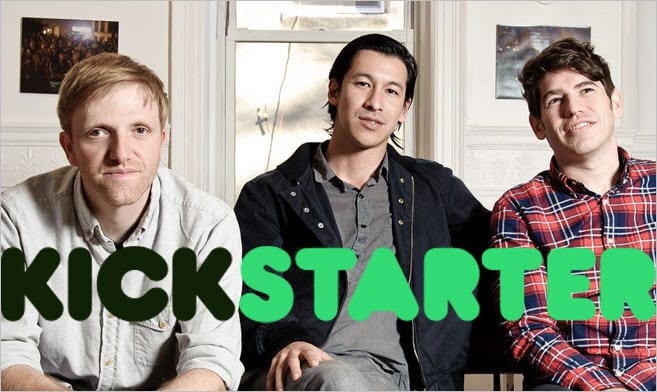- The Capital Letter
- Posts
- How Kickstarter Funnels Billions to Startups
How Kickstarter Funnels Billions to Startups
Read time: 3 minutes
Good morning! It's Thursday, August 24th- Today we’re taking a look at Kickstarter’s meteoric rise in becoming one of the largest investment companies in the world!
THE FEATURE
How Kickstarter Funnels Billions to Startups

Kickstarter founder Perry Chen wasn’t always in the tech industry, having worked as a disc jockey, coder, day trader, waiter, and even as a preschool teacher.
So, how did this jack-of-all-trades create a company that’s generated $7.3B in value pledges for startups? Let’s find out!
So, What’s the Business?
Being a disc jockey, Perry Chen was fascinated with the music industry and wanted to set up a concert starring some of his favorite DJs from around the country. Upon realizing how much this event would cost, Chen came up with an ingenious idea.
With his coding knowledge, he set up a funding site in which people could purchase a ticket ahead of time to fund the concert– but there was a catch. Ticket purchasers would only be charged if the fundraising goal had been met and the concert took place.
After successfully launching the concert, Chen realized that he’d found an innovative idea that if scaled up, could become a multi-million-dollar company. In 2009, Chen and two of his friends founded Kickstarter, and within the first year, they successfully funded 3,900 projects.
Kickstarter essentially has a marketplace business model that connects creators with pledgers– akin to how Amazon operates by connecting buyers with sellers.
To use Kickstarter, creators must present a working prototype and a tangible product to release if their funding goal is met. Creators incentivize monetary contributions with exclusive rewards based on donation levels, such as limited editions, one-of-a-kind experiences, or free lifetime subscriptions.
How Kickstarter Makes Money
Kickstarter fee– If a campaign reaches its fundraising goal, Kickstarter takes 5% of the total funds raised.
Payment processing fees– Creators pay $.20 per pledge and a 3% processing fee on every donation. For micropledges of under $10, the processing fee is 5% with a $.05 fee per pledge.
Paid advertising: Startups can pay to promote their campaign on the platform.
Kickstarter’s business model proved to be successful early on, raising $28M in pledges in 2010 to $529M in 2015, which means the company experienced 108% annual revenue growth over that five-year period.
Success stories from the platform range from VR company Oculus which raised $2.4M on Kickstarter and eventually sold to Facebook for ~$2B to “Surprise! Four Secret Novels by Brandon Sanderson” which raised $40M in 2022.
Estimated Revenue
Kickstarter is a private company and hasn’t disclosed any revenue stats, but we can make some pretty accurate estimates. While the company has generated $7.3B in value pledges, only 40.62% of campaigns reached their funding goal.
Since Kickstarter only validates donations from successful campaigns, that means investors have paid approximately $2.9B on the platform. So, from Kickstarter fees alone, they’ve generated $145M in revenue– not taking into consideration payment processing fees as it’s impossible to estimate how many individual donors have used Kickstarter.
The Innovation: A Mutually Beneficial Relationship
Investors love using Kickstarter because of the low risk involved, considering that they only pay when a campaign is successful.
But this also means that Kickstarter’s revenue is directly tied to the number of successful campaign launches. So, Kickstarter is incentivized to continually evolve its platform to ensure the maximum number of successful campaign launches.
The platform has built-in tools that make it easy for startups to develop an eye-catching landing page for their campaign. Additionally, they have in-depth resources such as the Creator Handbook that provides creators with a launch formula based off of the best campaigns.
In the end, Kickstarter wins when the campaigns on their platform do well, which is why nearly 600,000 creators have flocked to the platform.